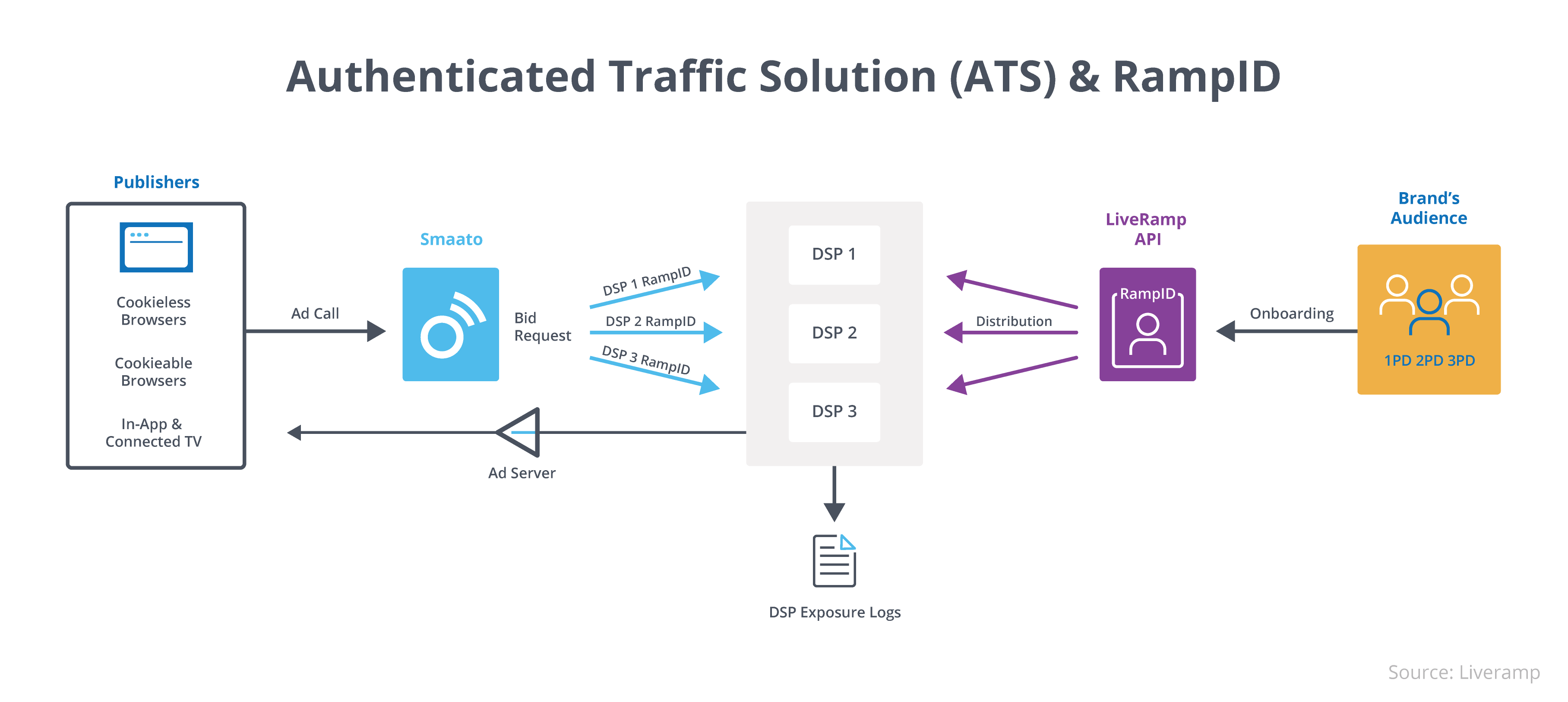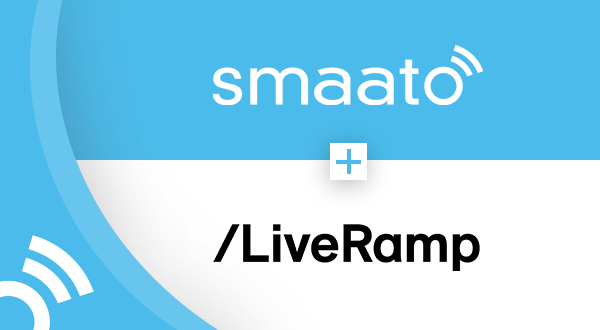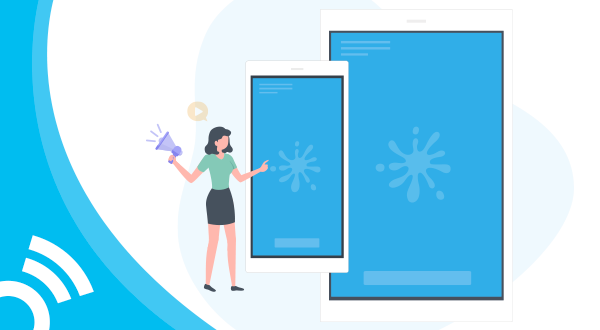Third party cookies are a thing of the past, but marketers still need to reach relevant audiences, and publishers want to deliver positive user experiences.
With Apple’s iOS 14 privacy changes, crumbling cookies, and an increased spotlight on protecting user privacy, publishers and marketers need an alternative solution to addressability that doesn’t rely on a personal identifier or third-party cookies in order to deliver relevant – and privacy compliant – advertising.
Why Do We Need an Addressability Solution?
We’ve seen how hyper-relevant banner ads have generated a stronger click -through rate (CTR) and improved lower -funnel metrics. As both ad tech professionals and consumers, we know firsthand how people-based advertising is more effective (and therefore, more lucrative). In a new era of TV, too, with internet streaming at the forefront, addressability has allowed for different ads to be played for different viewers in the same program and even within the same household, delivering a more engaging viewer experience.
In the past, marketers reached audiences through third -party cookies and personal identifiers. In 2022, however, the cookie is nearly obsolete and not up to the standard of current consumer privacy needs. Solutions like Apple’s iOS 14, make it simple for users to remain opted out of sharing personal identifiers, like Device IDs. Google is gradually following suit, doubling down on consumer-first privacy controls.
As a result, DSPs are receiving fewer signals in bid requests, making it harder to make informed bids. Publisher revenues may take a hit, and users get served less topical ads – and, as a result, may have a more frustrating or jarring advertising experience.
At Smaato, we are a privacy-first company, and put the utmost value on ensuring that users have the transparency and controls that they desire to customize their advertising experience. While we don’t want to lose the benefits of addressability, we need a privacy-compliant solution. As privacy laws shift and the crumbling cookie disintegrates completely, addressability must evolve, too.
An End-to-End Solution: Authenticated Traffic Solution (ATS) & RampID
Our partner, LiveRamp, offers a way to build a scaled and durable identity through their authenticated framework and powers brands and publishers to leverage their first-party data without compromising user privacy. How? By passing a “RampID” in the bid request, a cookieless person-based identity enables publishers, marketers, and advertisers to reach a person (or individual) in a privacy-centric manner across channels. As a result, marketers can reach their prospects and customers based on delivering relevant, impactful advertising. Publishers can provide high-value person-based inventory to marketers with stronger CPMs and fill rates while providing a more meaningful user experience. And most importantly, user privacy is protected through pseudonymization. That process looks a little something like this:
- A Publisher implements the Authenticated Traffic Solution (ATS), taking consented personally -identifying information (PII) to source a RampID Envelope from LiveRamp’s ID Graph.
- Header Bidders and SDKs like PreBid are able to retrieve the RampID Envelope from the publisher, and send it along to an SSP.
- Sidecar-enabled SSPs, like Smaato, are able to decrypt the Envelope using LiveRamp’s Sidecar appliance, and can append the bid request to its DSP partners with RampID.
- DSPs use this improved addressability to make a more informed bid and can use RampID exposure logs for person-based measurement.

click to enlarge
So, What is a RampID?
The RampID is a pseudonymous, a person-based identifier that is tied to an individual in the LiveRamp identity graph. The RampID allows marketers to reach the same individual across multiple screens and devices, and more accurately and efficiently target their messaging while maintaining complete compliance with user-and data-privacy regulations.
Why Are RampIDs Important?
The RampID helps create connectivity across screens and devices. As new privacy defaults keep users opted out of device IDs and as users reject cookies, it becomes harder to deliver cross-screen and cross-device experiences. And, the risk of delivering the same ad to a user over and over, hurting brand sentiment, increases.
An individual RampID is associated with many different devices, but is not traceable back to an individual. As a result, patterns of behavior, associated devices, and more, can all be used to help address this consumer without ever knowing exactly who they are.
Essentially, a RampID unifies publishers’ inventory across multiple screens, channels, and devices to improve the consumer experience.
Key Benefits for Publishers
There are many key benefits for publishers with this RampID addressability solution, including:
- Stronger CPMs – Because Marketers are willing to pay more for authenticated traffic, CPMs are higher.
- Better fill rates – Authenticated traffic brings higher CPMs, and therefore inventory has a great likelihood of being filled.
- Boosted revenue – Both stronger CPMs and better fill translate to an increase in publisher revenue.
- Improved user experience – As users get more relevant advertising and frequency-capped messaging, their overall advertising experience improves.
- Greater user controls – Consumers are also able to easily opt out of this flow, giving users increased control and better brand sentiment.

Key Benefits for Marketers
For Marketers and DSPs, RampIDs (and the Smaato-Liveramp partnership) offer a privacy-complaint addressability solution.
Other key benefits include:
- Greater reach – Without compromising user privacy, marketers can see the same user across different devices resulting in multi-channel campaign improvement.
- More informed bids – With greater transparency comes improved decision making.
- Measurability – With closed-loop attribution, marketers get deeper insights into campaign performance.
- Improved Efficiency – With frequency capping and campaign suppression at a person-level, media dollars go further without diluting brand messaging.
It’s easy to get started. Are you ready?
Getting Started
What do Smaato Publishers need to do to get started with RampIDs?
In order to pass RampIDs, publishers need to be integrated with Liveramp. If you need help getting set up with a Liveramp integration, get in touch with your client partner manager, and we’ll give you a hand getting connected.
Once you are integrated, it’s simple to get started: connect with your client partner manager, and we can confirm that the requests are integrated with RampIDs. We’ll take care of appending them and passing DSP-specific IDs on to our demand partners. So, once we’ve confirmed that the information you are sending is correct, you’re ready to reap the rewards of RampID-activated inventory.
How do Smaato DSPs get started with RampIDs?
In order to receive RampIDs, DSPs also need to be integrated with Liveramp. If you need help getting set up with a Liveramp integration, get in touch with your client partner manager, and we’ll give you a hand.
Once you are integrated, it’s simple to get started receiving RampIDs from Smaato. Let your client partner manager know that you are interested in receiving RampIDs, and we’ll activate it for your account. That’s it!
Questions?
We’re here for you.




